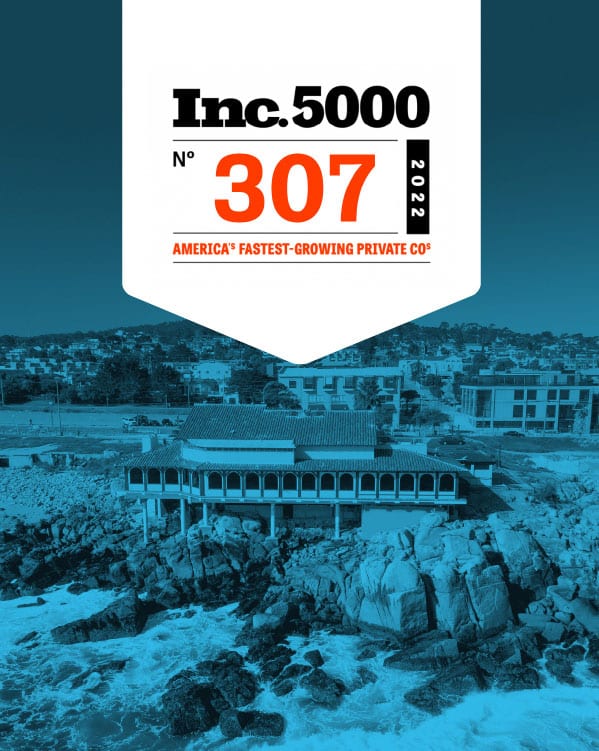When it comes to retail, the annual holiday shopping season has historically presented many businesses with operational challenges. Whether that be procuring enough inventory to meet demand or finding seasonal workers, these normally predictable challenges are forecasted to take a turn for the worse this holiday season. As supply chain issues persist, we look at the current state of retail, what to expect from Q4, as well as other trends in the commercial real estate world.
Supply Chain Issues
For retailers, the holiday season always presents problems. With the global economy still in recovery from the pandemic, these challenges are only exacerbated; with inventory and supply chain issues brought to the forefront. Problems in the supply chain often result in other disruptions down the line, meaning, it is no surprise retailers are struggling to ensure they have enough inventory to meet the demand for the holidays.
Taken from an article by the NRF, the author, Jonathan Gold notes: “There is a shortage of empty containers overseas as well as vessel space. There are ongoing port congestion issues, specifically at the Ports of Los Angeles and Long Beach, which account for 40% of U.S. imports and where over 70 ships are waiting to berth and unload thousands of containers at already full terminals”.

In the face of these challenges, some retailers have been bringing in merchandise months before in preparation. To meet the demand, retailers have been encouraging consumers to get started on their holiday shopping early. Despite this, many retailers are still grappling with ensuring enough inventory is in stock. Big box retailers are expected to fair better as they are better positioned to handle the inventory shortages across the nation.
In an article from Globe St., a report from Avison Young noted that “64% of retail executives are concerned about not receiving inventory on time”. Couple this with estimates from Deloitte that “the average shopper will spend $1,463 during the period, up 5% from the season last year”, one can more clearly see the problems faced by retailers.
Record Sales
However, while retailers face challenges on the supply side, the demand from consumers this holiday season is expected to reach record levels. In a report from the NRF, they are estimating that “holiday sales during November and December will grow between 8.5 percent and 10.5 percent” over 2020’s number. There are a couple of factors that are driving these record estimations for the 2021 holidays sales figures. One has been strong wage growth and the fact that many consumers received pandemic related stimulus. Another factor is that while e-commerce will play an integral role in retail sales, it is expected that households will shift back to more traditional in-store shopping.

What does this mean for retail?
While retail has been one of the hardest hit sectors in the pandemic, the days of mass closures within retail seem to be behind us. In their Retail Sales report from Marcus & Millichap, retail “posted a 1.4% increase in core retail sales for the month of October, with a 14.9% year over year increase”.
Furthermore, annual sales for restaurants and bars have seen a 29.3% increase compared to this time last year. In the same report from Marcus & Millichap, it was stated that retail vacancies dipped to 5.3%, “indicative that more shops are opening ahead of the holiday season”. According to John Chang, Senior Vice President and Director of Research Services at Marcus & Millichap, “[retail] prices are up just 1.9% over pre-pandemic levels, and revenues are up by 2.2%”, with some taking the view that retail looks like a bargain right now. Retail continues to fight headwinds from the pandemic but what has become clear is there is still demand for brick-and-mortar stores that provide consumers with a more conventional in-person shopping experience.
Opportunities in retail are out there, but investors are being pushed to think outside the box and create lasting concepts. One notable example of this is the emergence of ghost kitchens, which are primarily reliant on food delivery apps and services. With no dine-in or takeaway services available to customers, the concept has gained traction because of some of the challenges presented by the pandemic. In RE Journals blogpost, they quoted a CBRE May report, which expected “ghost kitchens to account for 21% of the U.S. restaurant industry by 2025”.

CRE Trends
While the retail sector grapples with supply chain issues, other sectors in the commercial real estate industry have continued to stay hot. According to research from Colliers, sales for multifamily in quarter three “hit $78.7 billion, a 16.3% year-over-year increase”; with Industrial sales topping “nearly $40 billion [trading] hands in the quarter, a 16.9% increase year-over-year”.
D. Scott Lee, Managing Partner at Tauro Capital Advisors, stated in an article from Globe St., “Overall, our outlook on commercial real estate investment and the capital markets is optimistic for Q4 and well into 2022. Investment and lending activity has continued to ramp up and we anticipate this momentum will continue into the New Year”. This is viewed by some as a great opportunity for investors as they can lock in interest rates while they are low.
The announcement from the Federal Reserve that they will be begin to reduce their monthly purchase of treasury bonds has prompted many to believe this will affect interest rates. These interest rates are not expected to take place until middle of next year but are expected to be nominal increases. On the other hand, capital is readily available with investment activity ramping up.
As economies continue their recovery efforts and businesses are having to explore new ideas, we are seeing new and innovative ideas for retail spaces. With all the momentum that is surrounding the retail sector, working with an experienced developer who can help bring your concept to reality is best to reduce project costs and timelines. SCGWest is here to assist with any development, expansion, or redevelopment needs, click here to learn more about what we offer.
